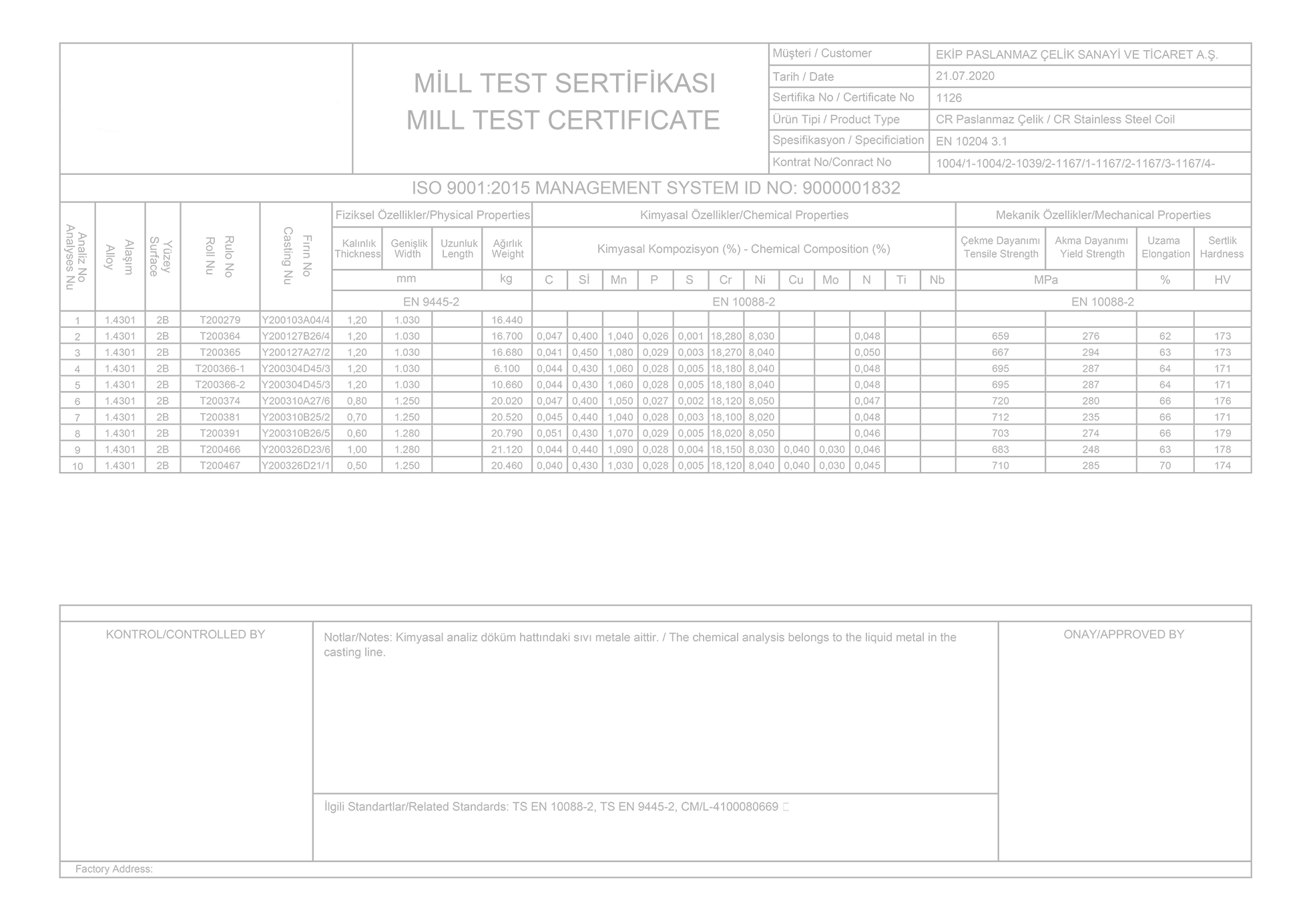Stainless steel manufacturers issue a certificate specifying their chemical and mechanical properties for each roll they produce. These certificates are issued according to one of the world standards and the standard is specified in the certificate. The most commonly used ones are the En, ASTM, and DIN standards.
We can review the certificates in three parts.
The first section contains information such as order number, roll number, supplier and customer company names, certificate number, and creation date. Some companies specify the standards on which the certificate is based.
The second part is divided into three parts within itself.
In the material information section, thickness, width, length, and quantity are given based on the serial number.
In the mechanical properties section, the elasticity, hardness, yield, and rupture values of the material are given. The yield value is specified as YS or RP. The percentage value given specifies the flow of the material at that value. The lower this value is, the higher the drawing quality of the material will. The rupture value is specified as TS or RM. As this value increases, the material breaks later. Its elasticity is specified as EL or LO. The higher this value is, the higher the drawing quality of the material will be. Hardness is specified in the hardness section. The values specified in this section as HV, HR B, HB allow us to understand how the material hardness is measured. HV describes precision diamond point measurement while HR B describes diamond point measurement and it is diversified as A, B, and C. HB is the measurement made with a steel ball.
In the section where the chemical contents are given, the percentages of the chemical elements in the produced stainless steel are given. Not all elements are given. The main elements are as follows; Nickel (Ni), Chromium (CR), Carbon (C), Silicon (Si), Manganese (Mn), Titanium (Ti).
In the third section, information is given about how the material measurements are made and according to which standards.

What is 3.1 certification?
To issue a certificate 3.1, you must be a manufacturer, perform the analysis of mechanical and chemical values at the highest level (3rd Degree) within your body, complete all calibrations of the devices you test, and at least one of your authorized persons must be appointed to issue the certificate. If you do not meet all of these requirements, you cannot issue a 3.1 certificate. Contrary to what is believed, certificate 3.1 is not only applied to prime materials. The manufacturer company can grant this certificate to all the products it produces. If the certificate is 3.1 A, the appointed officer is a controller designated according to official rules. If it is 3.1 B, it is a representative authorized by the manufacturer and independent of production. If it is 3.1 C, it is sent by the authorized customer.



